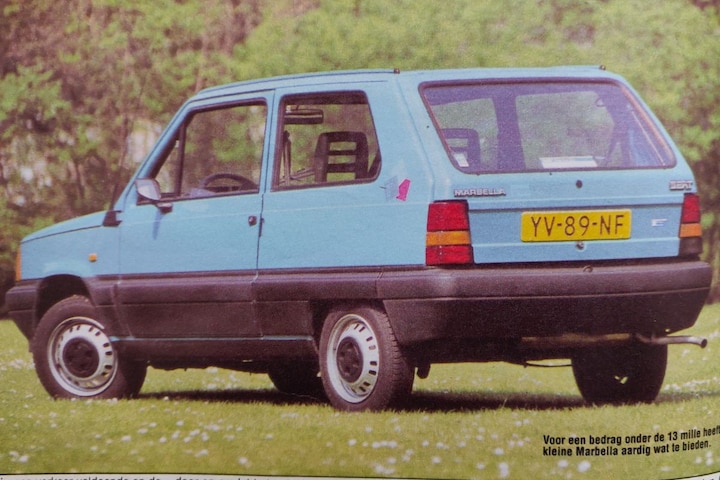Thirty years ago, who wanted to drive a new car cheaply, quickly came to the Fiat Panda. However, it could be even cheaper if you went shopping at Seat for its twin brother Marbella, although it did drop some stitches compared to the Panda.
In the early 80s you could walk into the Fiat showroom for a Panda and a door further you could find almost the same car at Seat. After all, the two were twins for a long time and even both bore the name Panda. That arose from the time when Seat still had close ties with Fiat. That came to an end in 1986, when Fiat broke ties with the Spanish brand. However, that did not stop Seat from keeping the Panda produced under license in production, renaming it Marbella and, after a renewal round for the Panda, also bringing it outwardly in line with its Italian counterpart.

Because Seat was alone in the development of the Marbella, that car continued on the technology of the pre-facelift Panda. While Fiat provided the Panda with new engines and an improved chassis, the Marbella stayed more with the familiar story. In 1991, the Marbella was clearly more outdated than the Panda, but well, on the other hand, it was also a bit cheaper. “With the Fiat Panda you laugh at everyone”, but with a Marbella you might laugh even harder because of its price.
Nevertheless, in our driving test from exactly 30 years ago, the outdated technology of the Marbella absolutely had to be emphasized. “The 903cc Marbella engine dates back to the era before Fiat’s 1,000cc Fire engine and with its classic rigid rear axle and leaf springs, the Marbella simply lags behind the Panda, which features a modern semi-independent rear axle construction,” we illustrated. The fact that the older engine with its only 40 hp of the Marbella made a slower car than the Panda, then again disguised the lag in terms of chassis. After all, there was not quickly a situation in which the small Seat would ask much of it, given its modest strength. In fact, the editor on duty found it to be remarkably sharp to steer, not too nervous at higher speeds and with understeer the whole thing was corrected again with the throttle loose. The damping was also comfortable enough and that helped to disguise the less comfortable seats.

Where the Marbella dropped more was in terms of sound, finish and equipment. The outdated block soon became noisy and that sound came into the cabin without too much resistance. A place where you, incidentally, stared at a very basic dashboard, where above all the ergonomics were not really well thought out. For example, the Marbella had instruments with only a speedometer and a sea of lights. Also in terms of materials, it all looked a bit shabby than the already not very luxurious Panda. Anyway, you could drive it around with four people in relatively acceptable conditions and if you took it easy, it was also quite economical for its time. And economy was of course an asset, because with its price of just under 13,000 guilders, the economy already started when you bought it!